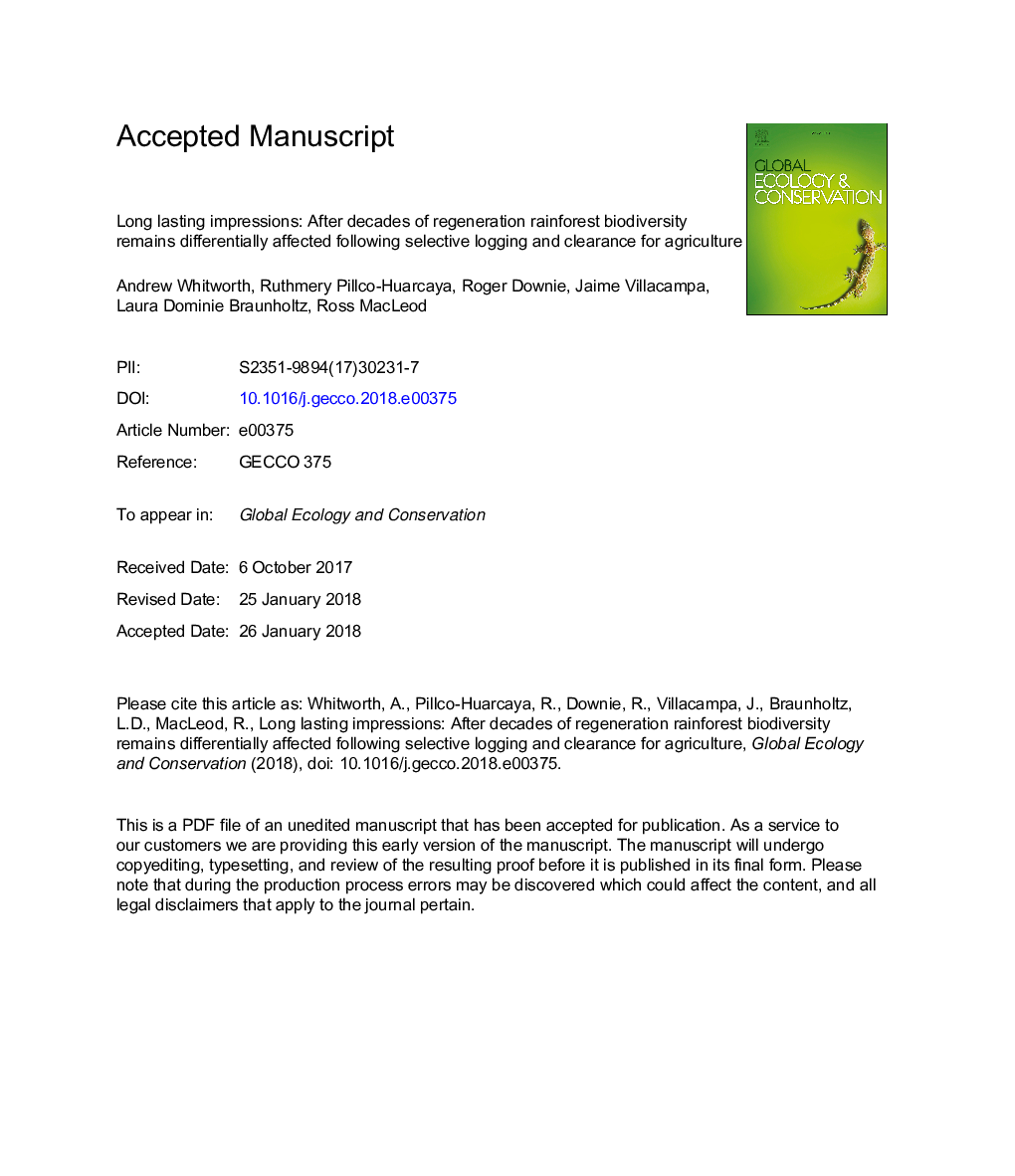| Article ID | Journal | Published Year | Pages | File Type |
|---|---|---|---|---|
| 8846240 | Global Ecology and Conservation | 2018 | 32 Pages |
Abstract
The need to complement primary forest protection with the conservation of regenerating tropical forest is becoming increasingly well-understood. However, the persistence of biodiversity differences between areas once subjected to different anthropogenic land-uses, after long periods of regeneration, remains poorly understood. We investigate long-term differences in species richness, diversity, relative abundance and community evenness within a regenerating rainforest previously subjected to two different but common types of human disturbance: selective logging and clear-felling for agriculture. Even after a 30 year recovery period, and despite close-proximity to protected primary forest that provided favourable recolonization potential, species richness and diversity of amphibians, butterflies, understorey birds and nocturnal birds were all lower in post-agriculture secondary forest, compared to regenerating selectively logged forest; in contrast, mammals showed no significant difference. Species richness in secondary forest was on average 18â¯Â±â¯6.7% lower, and diversity was 13â¯Â±â¯7.6% lower than in the selectively logged forest. Community evenness and relative abundances also displayed differences related to historic human disturbance type. However, the measured difference in species richness (18%) between selectively logged and secondary forest was 60% smaller than previous indirect comparisons based on young areas of regenerating forests have suggested. We find that human-induced differences in tropical biodiversity are long lasting but also suggest that even historically highly disturbed regenerating tropical forests could, with appropriate management, provide important opportunities for conserving tropical forest biodiversity.
Related Topics
Life Sciences
Agricultural and Biological Sciences
Ecology, Evolution, Behavior and Systematics
Authors
Andrew Whitworth, Ruthmery Pillco-Huarcaya, Roger Downie, Jaime Villacampa, Laura Dominie Braunholtz, Ross MacLeod,
